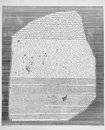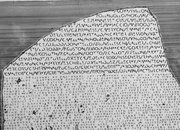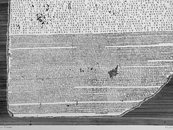La Pierre Rosette [The Rosetta Stone].
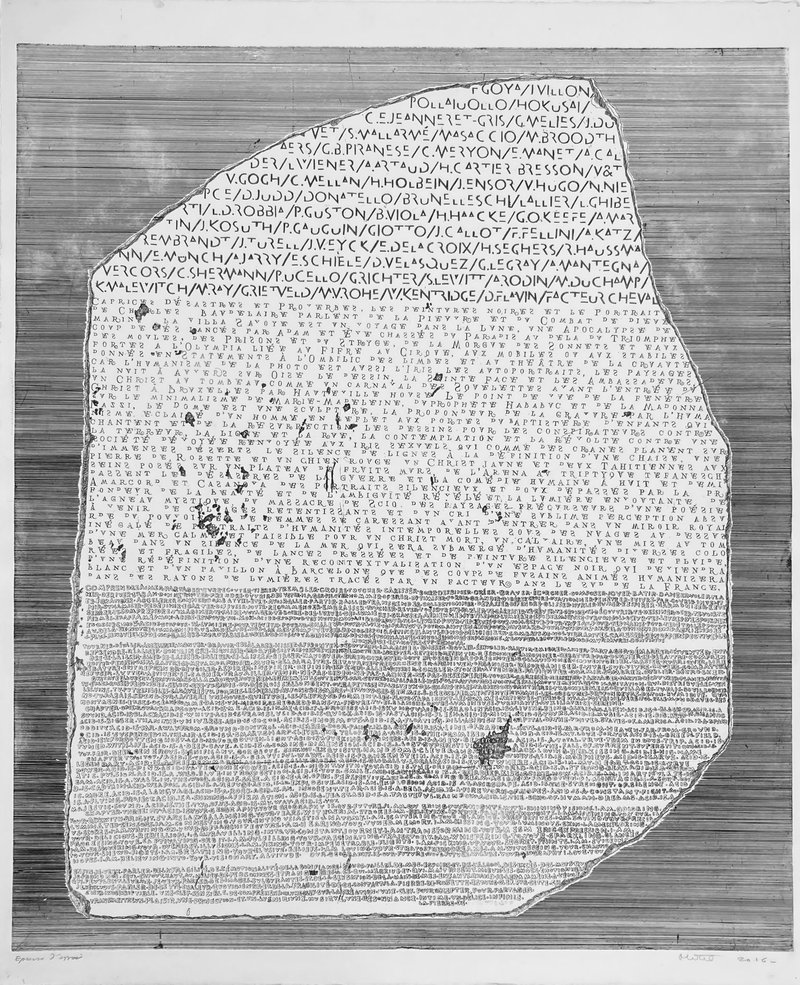
La Pierre Rosette. Orchamps: Atelier Didier Mutel, (2015).
Broadside (108 x 87.5 cm). Eau forte etching on copper, printed in black on Arches paper. An edition of 50 copies, plus one copy on Japanese paper adhered to a translucent slab, mounted on an oak pedestal.
Mutel’s Rosetta Stone is printed at a 1:1 scale with its ancient precursor and contains three original alphabets designed by Mutel—which the artist has described as “a typographic transposition, or pastiche of letterforms.” Within the text, Mutel further develops and pursues his theme of acide, the substance which literally draws or etches the copper plate, also carries a metaphorical essence, partly alchemical, partly poetic, but entirely creative.
Mutel’s three new letterforms encourage discovery in the same spirit as the ancient Rosetta Stone: by studying each section in context to the other two sections, a greater total meaning emerges. The sections are arranged from top to bottom as follows: first, the names of Mutel’s pantheon of artists, engravers, poets, photographers, architects, etc.; second, titles of artworks by the creators from the previous section; and third, Mutel’s spontaneous prose poem, a testimonial for acid etching, for the artistic expression manifest in the two previous sections, and a kind of chant, half in French and half in English.
Click here for a video describing the work
Homage to the original Rosetta Stone, and the History of Engraving: Printing Napeleon’s Description de l'Égypte at the Atelier Rémond
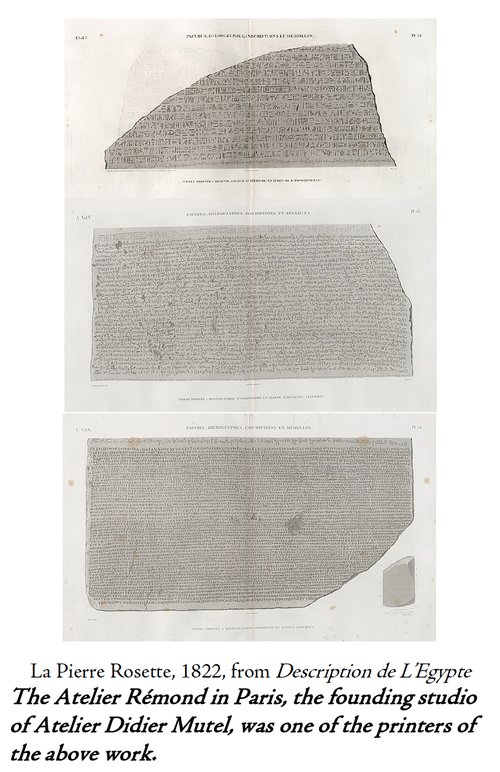
Mutel’s interest in printing a “new” Rosetta Stone has it’s roots in the history of printing, as well as his own printing workshop, which can be traced back to the Atelier Rémond, founded 1793, the longest continuously operating engraving studio in France.
The Description de l'Égypte ou Recueil des observations et des recherches qui ont été faites en Égypte pendant l'expédition de l'armée française (1809-1826) records the Napoleonic expedition to Egypt in 23 large folio volumes. The Atelier Rémond was among several studios that printed the plate volumes, thus Mutel’s own Rosetta Stone is both a connection to that history as well as a continuation toward the future.
In 1799, a Napoleonic expedition to Egypt discovered the famous trilingual artifact near the town of Rosetta on the Nile Delta. The discovery marked the first bilingual example of Ancient Egyptian hieroglyphics—or in this case trilingual, namely: Ancient Egyptian hieroglyphs, a middle portion in Demotic script, and finally Ancient Greek. In 1822, Jean-François Champollion was able to transliterate the three scripts and thus decipher Egyptian hieroglyphics for the first time. Shortly after its discovery plaster casts and lithographic reproductions began circulating among museums and scholars. An etching printed on three large sheets (each measuring 70 x 110 cm) appeared in "Description de l'Égypte ou Recueil des observations et des recherches qui ont été faites en Égypte pendant l'expédition de l'armée française. Antiquités " (vol. 5, pl. 52-54), 1822.
description: The Rosetta Stone-Mutel
